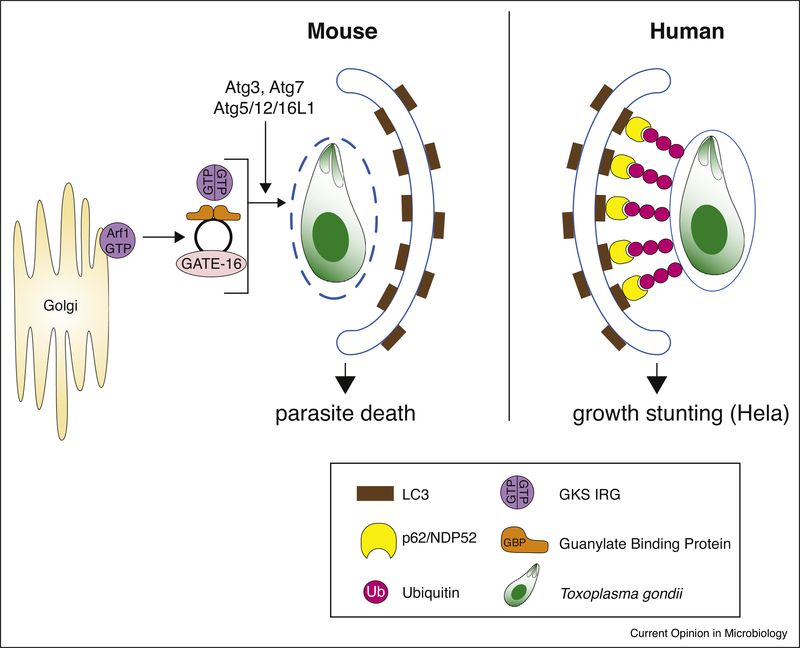Figure 2.
Autophagy-mediated restriction of Toxoplasma in human and murine cells.
In mice, the Atg proteins Atg7, Atg3 and the Atg12-Atg5-Atg16L1 complex, all involved in delivery and conjugation of LC3 to the autophagosomal membrane, are necessary to target the IRGs and GBPs to the Toxoplasma PVM. GATE-16 is the only LC3-like protein essential for controlling Toxoplasma infection in vivo, by activating the Golgi-localized membrane trafficking regulator Arf1 and keeping GBPs in a non-aggregated form in the cytoplasm of cells. GBPs and IRGs disrupt the PVM and LC3-driven autophagosomes either clear the parasite itself or the membrane remnants that remain. In humans, Atg7/16L1 (not pictured) target ubiquitin to the Toxoplasma PVM. This leads to the recruitment of p62 and NDP52 and subsequently LC3, without acidification of the PV and disruption of the PVM. The parasite is eventually enveloped in the autophagic double membrane where it fails to grow and replicate further.

